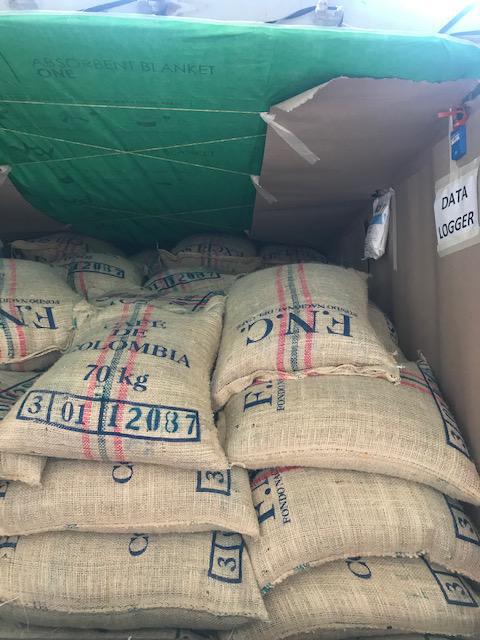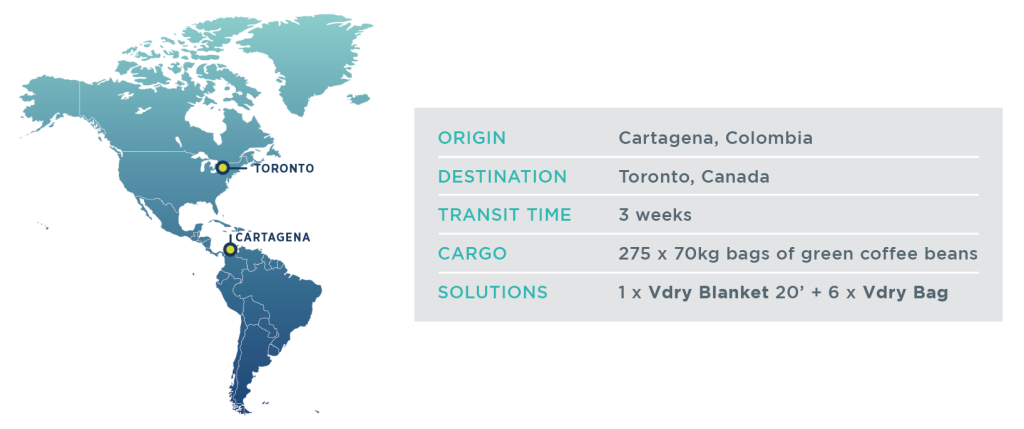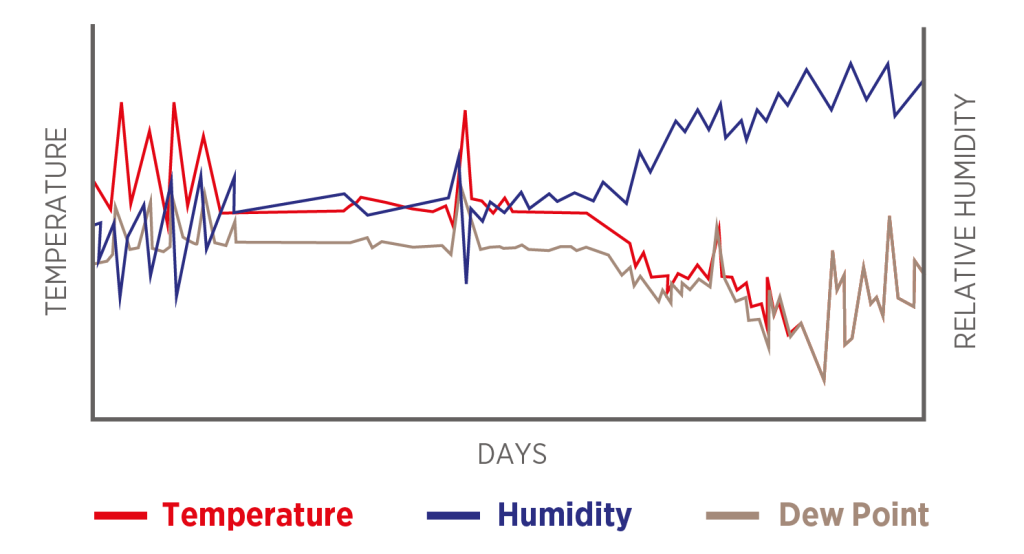Shipping container condensation is caused by temperature fluctuations that occur during transit. Coffee is a commodity with an elevated risk of shipping container condensation damage, so it is no surprise to see the Vdry Blanket is such a popular choice to protect against losses.
We partnered with a major US coffee buyer to investigate how the Vdry Blanket can better protect against shipping container condensation.

Why is coffee susceptible to shipping container condensation?
To understand why coffee is susceptible to shipping container condensation, it is important to understand why this problem occurs.
Shipping container condensation forms as moisture evaporates with the warm periods during the day and condenses on the cool surfaces of the container ceiling and walls when the temperature drops at night. This phenomenon is known as container rain, and you can read more about it in our in-depth guide.
The risk of container rain is elevated by a couple of factors that are unique to the transport of coffee.
The relatively high moisture content of the coffee bean means that a greater volume of moisture evaporates from the cargo into the container atmosphere. This increases the relative humidity inside the container, meaning that a greater amount of shipping container condensation will form even with minor temperature fluctuations.
Because of this, there are guidelines about the moisture content of the coffee bean, with around 12% the recommended level.
This risk is exacerbated by the nature of trade routes in which containers are loaded at high temperatures in tropical zones and shipped to cooler regions in Europe or North America.
As shipping container condensation is closely associated with temperature fluctuations, the risk for these coffee shipments is greater than other types of cargo.
Investigation into Container Rain in Coffee Shipments
We teamed up with a major coffee buyer to investigate how the Vdry Blanket can reduce container rain damages.
The study involved a 20’ container was loaded in Cartagena, Colombia with 275 bags of green coffee beans each weighing 70kg.
The container was shipped to Toronto, Canada in March 2020. The time of the year meant that there were significant temperature fluctuations between origin and destination, which increased the risk of shipping container condensation.
Data loggers were used to analyze the container’s humidity and temperature levels.
To protect the coffee against shipping container condensation the Vdry Blanket 20’ was used in combination with 9kg of high-absorption cargo desiccants. These materials were weighed at loading to ascertain how much they absorbed during the voyage.

Unbeatable Protection Against Shipping Container Condensation
The results from the data loggers showed extended periods of shipping container condensation.
This can be seen in the below graph which shows the temperature dropping to dew point as the vessel arrives at the colder climates at the destination. This coincides with increased relative humidity.
Despite these challenging conditions, there was no damage to the goods observed.
This was supported by weighing the Vdry Blanket, which absorbed 9 liters of shipping container condensation.
These results highlight the risk of condensation damage even when cargo desiccants are used, and demonstrate the necessity of the Vdry Blanket.
It can be concluded that had the Vdry Blanket been used in this shipment there would have been extensive losses due to shipping container condensation.

Key Findings
This investigation delivered a number of key findings that have proved invaluable to the coffee market:
- High Risk of Shipping Container Condensation: the data loggers showed extended periods in which condensation formed inside the shipping container.
- Cargo Desiccants aren’t Enough: while desiccant bags offer some protection against moisture damage, in high-risk shipments additional measures are required.
- The Vdry Blanket is Essential: the Vdry Blanket absorbed 9 liters of condensation. Had it not been used in this shipment there would have been extensive cargo losses.
